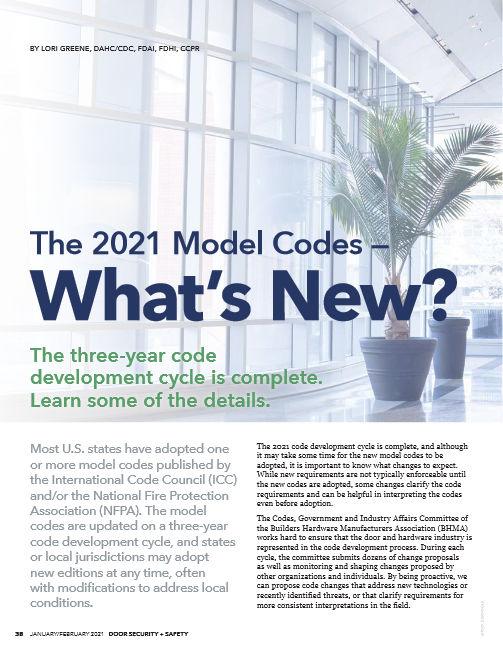 I’m on my way to Pittsburgh, and I hope to see some of you at the DHI conNextions conference! PLEASE come to my code update class on Wednesday at 8 a.m., and/or my session in the Innovation Theater at 3 p.m. the same day. You can also find me in the Allegion booth when I’m not scheduled for a presentation.
I’m on my way to Pittsburgh, and I hope to see some of you at the DHI conNextions conference! PLEASE come to my code update class on Wednesday at 8 a.m., and/or my session in the Innovation Theater at 3 p.m. the same day. You can also find me in the Allegion booth when I’m not scheduled for a presentation.
I recently received word that I won a Robert G. Ryan Editorial Award for the article below – first place in the technical article category! This award is presented to the best volunteer authors of an article in Door Security + Safety magazine written during the previous calendar year.
I’m sharing the article again, in case you missed it! 😀
~~~
This Decoded article was published in the January/February 2021 issue of Door Security + Safety
.

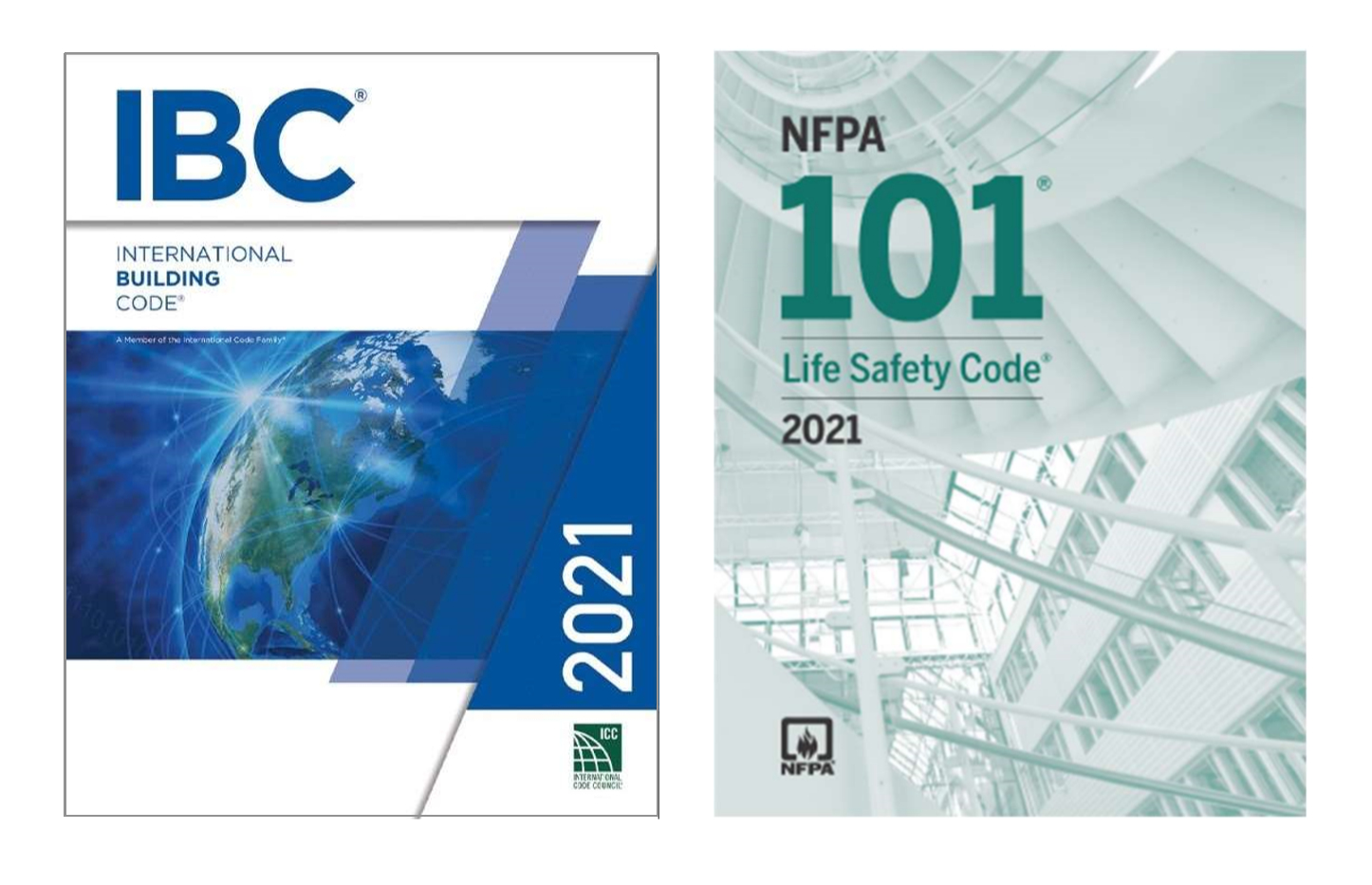 Most US states have adopted one or more model codes published by the International Code Council (ICC) and/or the National Fire Protection Association (NFPA). The model codes are updated on a 3-year code development cycle, and states or local jurisdictions may adopt new editions at any time, often with modifications to address local conditions.
Most US states have adopted one or more model codes published by the International Code Council (ICC) and/or the National Fire Protection Association (NFPA). The model codes are updated on a 3-year code development cycle, and states or local jurisdictions may adopt new editions at any time, often with modifications to address local conditions.
The 2021 code development cycle is complete, and although it may take some time for the new model codes to be adopted, it’s important to know what changes to expect. While new requirements are not typically enforceable until the new codes are adopted, some changes clarify the code requirements and can be helpful in interpreting the codes even before adoption.
The Codes, Government, and Industry Affairs Committee of the Builders Hardware Manufacturers Association (BHMA) works hard to ensure that the door and hardware industry is represented in the code development process. During each cycle, the committee submits dozens of change proposals, as well as monitoring and shaping changes proposed by other organizations and individuals. By being proactive, we can propose code changes that address new technologies or recently identified threats, or that clarify requirements for more consistent interpretations in the field.
This article briefly summarizes some of the changes related to swinging doors that have been approved for the 2021 model codes. For more in-depth information on these changes, refer to the Decoded columns that address these changes individually. To simplify this article, I will refer to the International Building Code (IBC) and NFPA 101 – Life Safety Code, but keep in mind that there are other publications in these families of codes that have similar requirements.
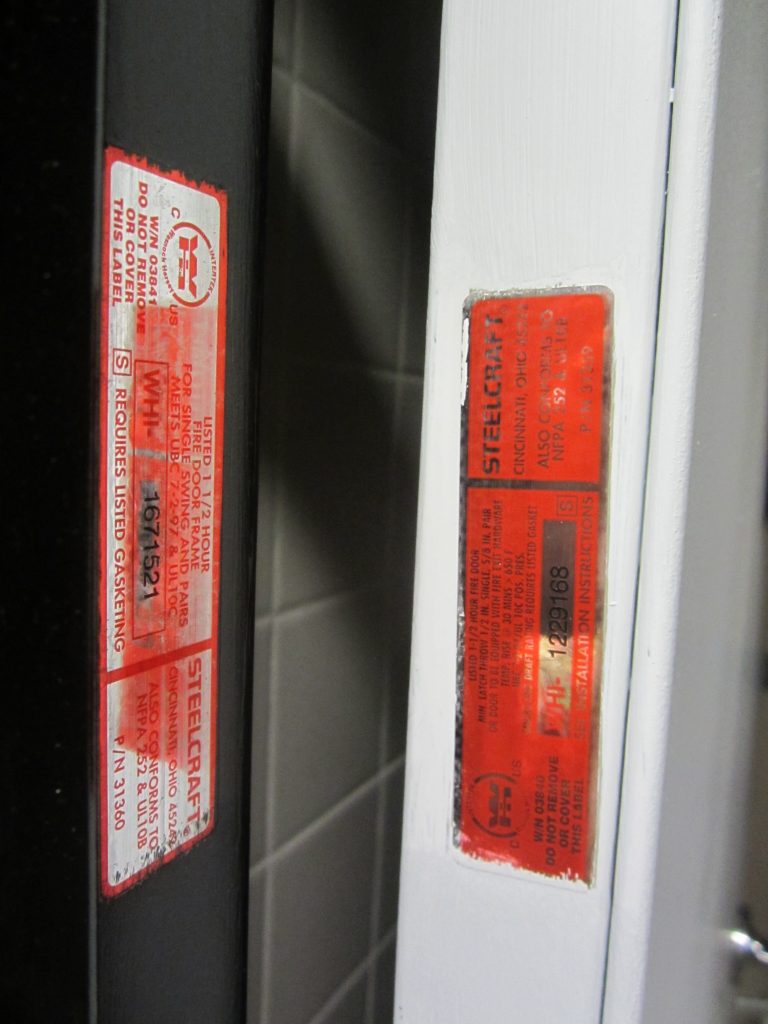 Extraneous Labels on Fire Door Assemblies: A paragraph in NFPA 101 requires life safety features (ex. sprinkler systems) that are obvious to the public to be maintained, or to be removed if they are not required. There has been some confusion about whether this requirement applies to fire door assemblies, as labeled fire doors are sometimes installed in locations that do not require a fire resistance rating. Some Authorities Having Jurisdiction (AHJs) considered the labels on fire doors to be obvious to the public and required extraneous labels to be removed or the assemblies maintained per NFPA 80 – Standard for Fire Doors and Other Opening Protectives. A change has been made to the 2021 edition of NFPA 101, to clarify that if a labeled fire door assembly is not required for a particular location, the label can remain, and the assembly is not required to comply with NFPA 80.
Extraneous Labels on Fire Door Assemblies: A paragraph in NFPA 101 requires life safety features (ex. sprinkler systems) that are obvious to the public to be maintained, or to be removed if they are not required. There has been some confusion about whether this requirement applies to fire door assemblies, as labeled fire doors are sometimes installed in locations that do not require a fire resistance rating. Some Authorities Having Jurisdiction (AHJs) considered the labels on fire doors to be obvious to the public and required extraneous labels to be removed or the assemblies maintained per NFPA 80 – Standard for Fire Doors and Other Opening Protectives. A change has been made to the 2021 edition of NFPA 101, to clarify that if a labeled fire door assembly is not required for a particular location, the label can remain, and the assembly is not required to comply with NFPA 80.
 Terminated Stops on Fire Door Assemblies: Previous editions of the IBC did not address terminated stops on labeled frames, which are fairly common in health care facilities. Terminated stops were not prohibited, but there was sometimes an assumption that they could not be used because of the potential for smoke infiltration. “Terminated stop” is a term that is now defined in the IBC – including a limitation of 6 inches on the height of the missing section of stop. The 2021 IBC describes the locations where terminated stops on fire door assemblies are NOT permitted, meaning that they ARE permitted in other locations. The locations where terminated stops are prohibited are all related to elevator lobby doors – in some underground buildings, fire service access elevator lobbies, and occupant evacuation elevator lobbies, as well as some elevator hoistway doors.
Terminated Stops on Fire Door Assemblies: Previous editions of the IBC did not address terminated stops on labeled frames, which are fairly common in health care facilities. Terminated stops were not prohibited, but there was sometimes an assumption that they could not be used because of the potential for smoke infiltration. “Terminated stop” is a term that is now defined in the IBC – including a limitation of 6 inches on the height of the missing section of stop. The 2021 IBC describes the locations where terminated stops on fire door assemblies are NOT permitted, meaning that they ARE permitted in other locations. The locations where terminated stops are prohibited are all related to elevator lobby doors – in some underground buildings, fire service access elevator lobbies, and occupant evacuation elevator lobbies, as well as some elevator hoistway doors.
One Releasing Motion: A change was made to the 2021 editions of both the IBC and NFPA 101, and the codes will now state that doors must unlatch with one releasing motion, rather than one releasing operation. This might seem like an insignificant change, but there were misinterpretations in the field regarding how the door hardware had to operate to release the latch – particularly on classroom doors. The terms “motion” and “operation” are not defined in the model codes, but because an operation could consist of multiple motions, the intent is to clarify that only one releasing motion is allowed.
BHMA A156.41 is the Standard for Door Hardware Single Motion to Egress. Although this standard is not yet referenced by the model codes, it can be used to help identify door hardware that unlatches with a single motion. The standard includes definitions for the terms “single operation egress”, “unlatch”, and “lockset”, and clarifies that rotating a lever less than 90 degrees must unlatch the door. For example, a lockset cannot require 110-degree rotation of the lever, or multiple motions in different directions.
Second Releasing Motion – Classroom Doors in Existing Buildings: This change applies to NFPA 101 only – the I-Codes require new and existing classroom doors to unlatch with one releasing motion. A change was retroactively made to the 2018 edition of NFPA 101, called Tentative Interim Amendment (TIA) 1437. This change has been carried forward to the 2021 Life Safety Code and allows classroom doors in existing schools to have hardware that requires two non-simultaneous releasing motions. The intent of this change is to allow schools to install a deadbolt in addition to an existing lockset or latchset; it is not intended to allow a separate deadbolt to be used on a door with panic hardware. The hardware must meet all of the criteria listed in this section of NFPA 101 – many of the retrofit security devices being marketed for classroom doors do not comply.
Operable Force for Hardware: Prior editions of the IBC include a limit of 15 pounds to release the latching hardware for on a door, but in the 2021 edition the operable force has been made consistent with ICC A117.1 – Accessible and Usable Buildings and Facilities. The maximum force to operate hardware with a pushing or pulling motion, like panic hardware, is 15 pounds. For hardware that is operated by a rotational motion – like a lever handle, the limit is 28 inch-pounds. This creates a conflict with the 2010 ADA Standards for Accessible Design, which limit the force for operable parts – including door hardware – to 5 pounds.
Egress From Exterior Spaces: The 2021 IBC includes a new section that addresses doors serving as a means of egress for an exterior space (like a courtyard or roof terrace), where the egress path passes through the interior of the building. If the exterior space has an occupant load of 300 people or less, the door leading to the interior of the building can be locked on the exterior if certain criteria are met. The lock must be readily distinguishable as locked, and signage is required, stating: THIS DOOR TO REMAIN UNLOCKED WHEN THE OUTDOOR AREA IS OCCUPIED. A weatherproof phone or two-way communication system is required adjacent to at least one exit access door, with signage describing the use of the system. In addition, a clear window, sidelight, or vision light at least 5 square feet in area must be provided at each of the exit access doors.
Doors Serving Balconies: The IBC change related to egress from exterior spaces also addresses doors serving individual balconies for dwelling units or sleeping units, and balconies for private office space where the exterior area is 250 square feet or less. These doors can be locked or lockable from the exterior, and the lock indicator, signage, telephone, and vision panel mentioned above are not required by the code for these balconies.
Locations Requiring Panic Hardware: In addition to doors that require panic hardware based on the occupancy type and occupant load, panic hardware is required for some rooms containing electrical equipment. The 2021 IBC has been modified to be more consistent with the National Electrical Code (NFPA 70), however, the requirements of the NEC vary depending on which edition has been adopted in a project’s jurisdiction. The 2021 IBC also requires panic hardware for doors serving refrigeration machinery rooms larger than 1,000 square feet.
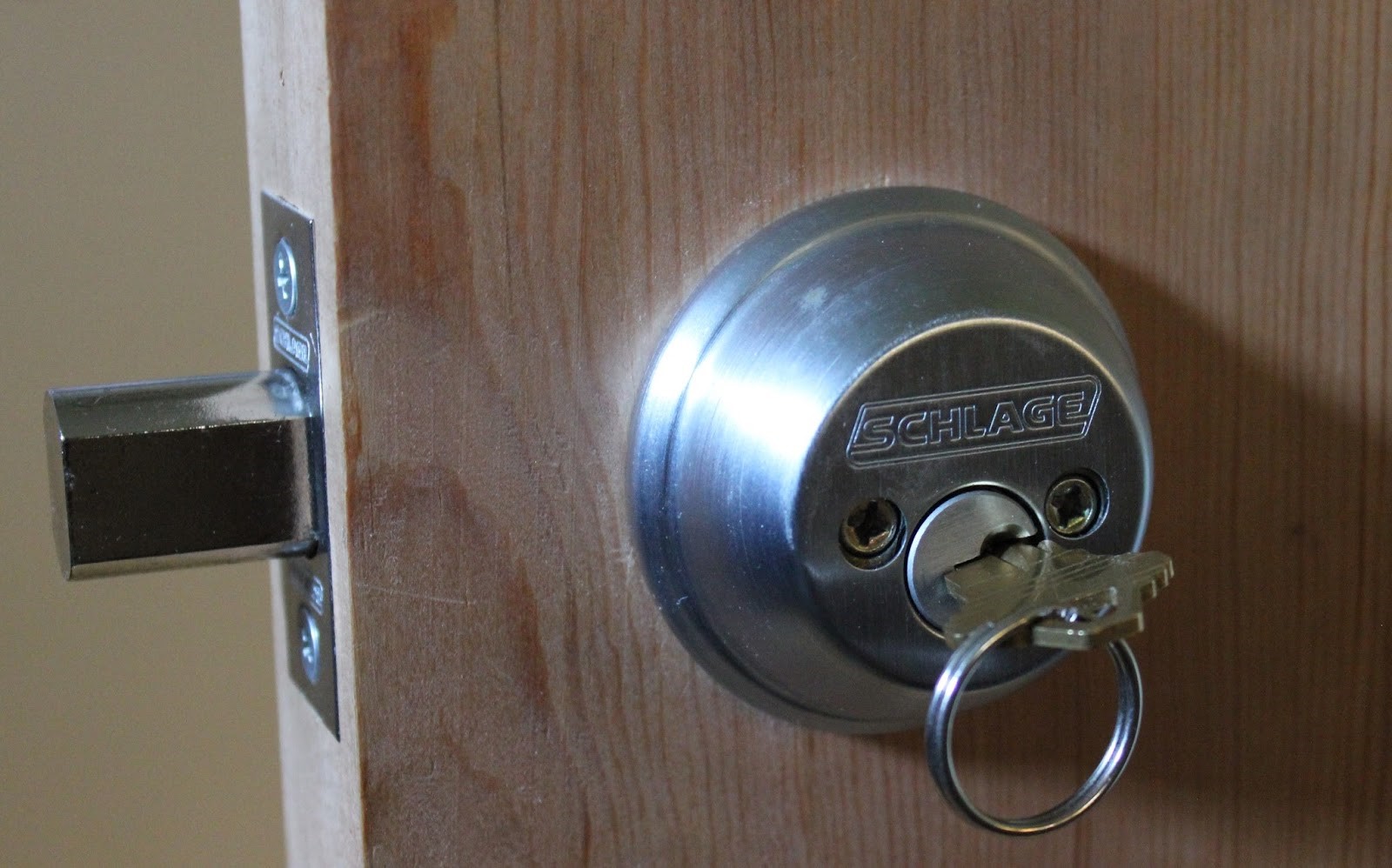 Mechanical Locking in Health Care Facilities: There is a change to the 2021 IBC that allows mechanical locks to be used on the egress side of doors serving certain types of health care units – where patients require containment for their safety or security. A similar section was already included in NFPA 101. Staff must have the keys or credentials to operate the locks and must be able to unlock the doors at any time to facilitate the evacuation of patients. It remains to be seen how (and where) this section will be applied in the field.
Mechanical Locking in Health Care Facilities: There is a change to the 2021 IBC that allows mechanical locks to be used on the egress side of doors serving certain types of health care units – where patients require containment for their safety or security. A similar section was already included in NFPA 101. Staff must have the keys or credentials to operate the locks and must be able to unlock the doors at any time to facilitate the evacuation of patients. It remains to be seen how (and where) this section will be applied in the field.
Projections Into Clear Opening Height: In previous editions of the IBC, “door closers and door stops” were allowed to project down into the required clear opening height of 80 inches, as long as these items were a minimum of 78 inches above the floor. This is consistent with the accessibility standards. A change has been made to the 2021 edition of the IBC, that clarifies which types of hardware may project down to 78 inches – door closers, overhead stops, automatic operators, and electromagnetic locks. NFPA 101-2021 does not include a similar change.
Automatic Operators on Public Entrances: Prior editions of the model codes and referenced standards did not require automatic operators in any specific locations. The 2021 IBC will now require public entrances for some buildings to have at least one automatic door – either a power-operated pedestrian door or a door with a low-energy automatic operator. These locations include certain assembly occupancies (Use Groups A-1, A-2, A-3, and A-4) with an occupant load of more than 300 people, as well as Business, Mercantile, and R-1 Residential occupancies with an occupant load greater than 500 people. Because of changes made in the 2017 edition of ICC A117.1, we are likely to see more automatic operators on both the exterior and vestibule doors at these public entrances.
Conclusion
Additional changes have been made in the 2021 model codes, including those related to the maximum width of an egress door, the mounting height of hardware on doors and gates serving swimming pools, restroom privacy sets, and the use of key-operated locks on entrance doors. In NFPA 101-2021, the Chapter 7 section called Locks, Latches, and Alarm Devices has been reorganized, including the sections addressing Special Locking Arrangements. Some of these modifications are clarifications and can be used right away to help ensure consistent interpretation of the codes. Others are actual changes to the codes that will not apply until the 2021 editions have been adopted in a project’s jurisdiction. For more information, consult the adopted code or the AHJ.
You need to login or register to bookmark/favorite this content.


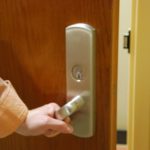

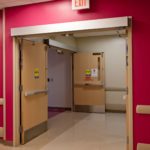


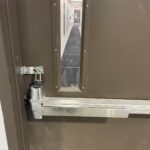
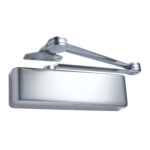

Great info!
Thank Lori!
Lori – In your paragraph “Second Releasing Motion – Classroom Doors in Existing Buildings” you mention allowing two releasing motions. I’m unclear if that mean not only an existing classroom door but also a new classroom door in an existing school building. I don’t think you specified.
Hi Andy –
It would apply to any door that had to meet NFPA 101 Chapter 15 for existing educational occupancies. If the application had to meet the requirements of Chapter 14 for new educational occupancies, the second releasing motion would not be allowed. For a new door in an existing school I think the intent would typically be that the door should have hardware that unlatches with one releasing motion, but technically it comes down to which chapter is being enforced by the AHJ.
– Lori